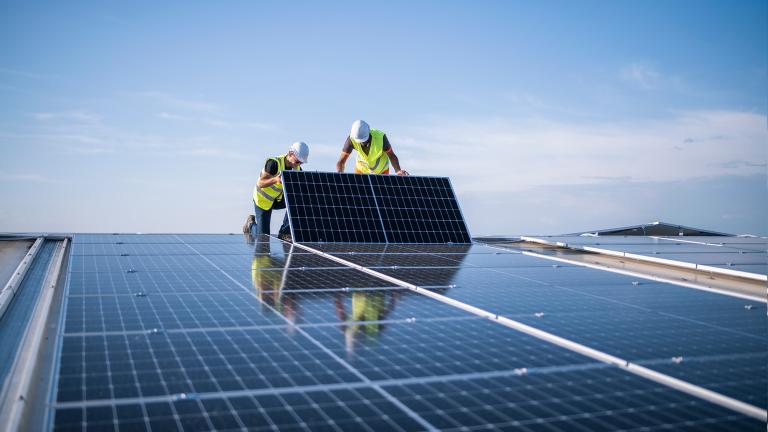As I’ve said before, certain types of goods — public goods — simply cannot be allocated efficiently through market mechanisms alone, even if we get prices right. Now this is not a “government good/private sector bad” post. It is a suggestion, as was my original post on this subject, that a market system requires not only regulation but large-scale public investment, and that one of the places we are making way too few public investments is energy infrastructure.
Again, this is not to say that public investment is the way to run everything; just as there are public goods, there are private goods. But we are trying to meet needs that are clearly public goods via private means. Full social pricing, though needed, will not change that.
Before focusing on energy, consider health insurance. The U.S. spends more on healthcare than any other nation, and gets worse results. There are various reasons for this, but one is that a competitive market in health insurance tends to provide more insurance and less healthcare than public insurance mechanisms. (When I gave this example back in October, biodiversivist argued that our healthcare system “does not resemble any free market I know of.” That does not change the fact that our healthcare system is less regulated than healthcare systems in any other rich nation.)
Every intervention that can be cited as possible government over-involvement in our medical system can be found in other systems that spend much less on healthcare and get far better results. If I have to, I’ll do a whole post on healthcare — but the bottom line is that moving a large part of the health insurance system from private to public spending would improve efficiency. Note that we are talking health insurance, not health care.
A major part of fighting global warming will consist of switching from polluting to clean energy. That is largely a matter of major infrastructure, and infrastructure, at least since the fall of feudalism, has always required large public investment, not just regulation.
Railroads, automobile roads, seaports, airports, phone lines, fiber-optic cable, the electric grid, and the airwaves of radio, television, and wireless communication all require allocation — the giving away or selling of public rights of way. In many cases, such as the internet or Tports or utility lines, much of that infrastructure was directly built by the public, and the public paid for much of the rest. Similarly, garbage, water, sewer, fire, and postal services are all examples where the core service is a public good.
Yes, there are cases where water and sewer systems and such are privatized. In many of those cases, privatization is a failure, and it ends up with the infrastructure bought back by the public. Water privatization in general has been responsible for radical political changes and near-revolutions in several cases. But even when public services are successfully contracted out, they are still paid for publicly.
Even cases like successful water and garbage privatization in France do not involve individual customers purchasing services in a truly competitive market, with a variety of suppliers and open entry and exit for suppliers from the market. Also, a lot of cases of “successful” privatization involve selling infrastructure developed over a long time at public expense to private corporations — often at way below its value.
Utilities of all types (including so-called deregulated ones) are examples of public goods. If you don’t want to generate 100% of your own power, there is only one grid to connect to. And multiple competing grids would be highly inefficient (and still require access to public rights of way).
But I’m going to make biodiversivist mad again by pointing out that post-deregulation utilities perform worse than pre-deregulation ones in the U.S., and publicly owned utilities in the U.S. perform better than regulated monopoly private utilities. Regulation of utilities was significantly reduced when it came to generation; you now have open entry and exit for people who wish to open generating facilities, and (for large generators) meaningful negotiation as to what price they will be paid for what they produce. (Small power generators of course take what they are given — disclosed in advance. But it is generally true in markets with both big and small players that small players adapt to conditions rather than making them.)
Post-deregulation electrical generation is not more reliable than pre-deregulation. It is not cheaper than pre-deregulation (and was not even when fossil fuels were cheap). It is not less polluting than pre-deregulation. Nor has the rate of deterioration in any of these things slowed down at all. In many cases, such as California, large corporations gamed the system — turning deregulation into a disaster for consumers and citizens. In the best examples it managed not to make things worse.
In another post I’ll make the case specifically for much more public investment in efficiency and clean-energy supply — hopefully to be posted by hump day of next week.


